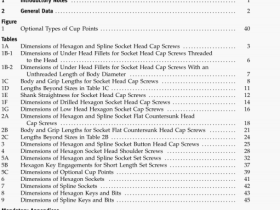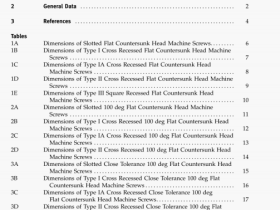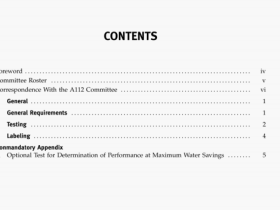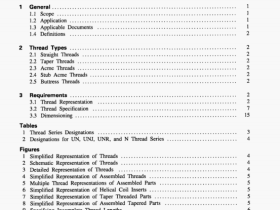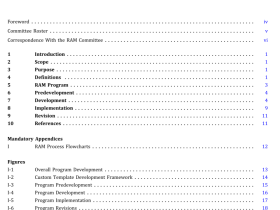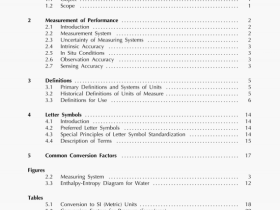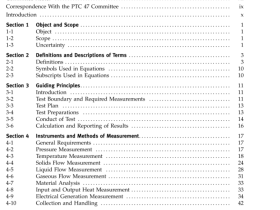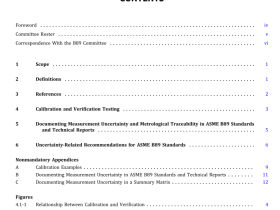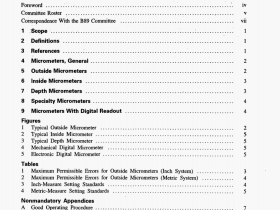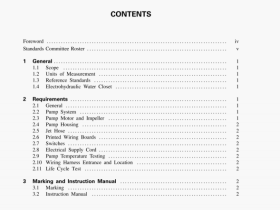ASME B31.5-2016 pdf download

ASME B31.5-2016 pdf download.Refrigeration Piping and Heat Transfer Components.
501.5.4 Vibration. Piping shall be arranged and supported with consideration to vibration (see para. 521.3.5).
501.5.5 Discharge Reactions. Piping systems shall be designed, arranged, and supported so as to withstand reaction forces due to let down or discharge of fluids.
501.6 Weight Effects
The following weight effects combined with loads and forces from other causes shall be taken into account in the design of piping.
501.6.1 Live Loads. The live load consists of the weight of the fluid transported, and snow and ice loads, if the latter will be encountered.
501.6.2 Dead Loads. Dead loads consist of the weight of the piping components and insulation, and other superimposed permanent loads.
501.6.3 Test Loads. The test load consists of the weight of the test fluid.
501.7 Thermal Expansion and Contraction Loads
When a piping system is prevented from free thermal expansion and contraction as a result of anchors and restraints, thrusts and moments are set up that must be taken into account as required by sections 502 and 519. Consideration must be given to stresses developed inside pipe walls by large rapid temperature changes of the contents.
502 DESIGN CRITERIA
502.1 General
Section 502 pertains to ratings, stress values, stress criteria, design allowances, and minimum design values, and formulates the permissible variations to these factors used in the design of piping.
502.2 Pressure—Temperature Design Criteria for Piping Components
502.2.1 Components Having Specific Ratings.
Pressure—temperature ratings for certain piping components have been established and are contained in some of the standards listed in Table 526.1.
502.2.2 Ratings: Normal Operating Conditions. For
normal operation the design pressure and design temperature shall be within the pressure—temperature ratings for all components used.
502.2.3 Ratings: Allowance for Variations From Normal Operation. It is recognized that variations in pressure and temperature inevitably occur, and therefore the piping system shall be considered safe for occasional operation for short periods at higher than the design pressure or temperature.
by the formulas using the maximum expected pressure during the variation does not exceed the S value allowable for the maximum expected temperature during the variation by more than the following allowances for the periods of duration indicated:
(a) up to 15% increase above the S value during 10% of the operating period
(b) up to 20% increase above the S value during 1% of the operating period
502.24 Considerations for Local Conditions and Transitions. When two lines that operate at different pressure—temperature conditions are connected, the valve segregating the two lines shall be rated for the more severe condition. When a line is connected to a piece of equipment that operates at a higher pressure— temperature condition than that of the line, the valve segregating the line from the equipment shall be rated for at least the operating condition of the equipment. If, however, the valve is a sufficient distance from the pipe or piece of equipment operating under the more severe service condition, with the result that the temperature of this valve would be lower than the more severe service condition, this valve may be rated for the most severe coexistent pressure—temperature condition to which it will be actually subjected in normal operation. However, the piping between the more severe conditions and the valve shall be designed to withstand the operating conditions of the equipment or piping to which it is connected.
502.2.5 Standards and Specifications. Where there are manufacturers’ standards of long standing, as is the case for Flanges, valves, and fittings for certain refrigerants, these shall be permitted for the particular refrigerant service listed by the manufacturer.
502.2.6 Use of Criteria. The design conditions mentioned in section 501 determine the thickness of metal or other material required in the piping system. This thickness can be determined by one of the following three methods:
(a) a combination of allowable stresses for the materials at the various temperature and mathematical formulas that link together the design condition and the thickness of metal or other material required.
